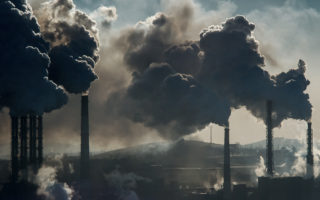
Ecological catastrophy
Near the beginning of last year, the national Environmental Protection Agency reached the end of a process by which the agency could set a new standard for certain types of air pollution.
Scientists estimate the stronger standard will prevent 4500 deaths. They also believe it will result in 290,000 fewer lost days of work, 800,000 cases of asthma, and 2000 fewer emergency department visits.
Official Input on the Rule
“The Consortium welcomes these strengthened standards … to reduce air pollution and safeguard our health,” write spokespersons at the Medical Society Consortium on Climate and Health. “Soot is a dangerous and deadly pollutant produced by industrial manufacturing, car exhaust, and power plant emissions. Mostly from the burning of fossil fuels. It threatens our health and environment — affecting approximately 63 million Americans and posing particular risks to infants, children, pregnant individuals, seniors, communities of color, and people with chronic illness.”
“The new, stronger particle pollution standards will save lives,” says Paul Billings, Senior Vice President for Public Policy, American Lung Association. “Despite what polluting industries are saying about the new air pollution standards, the sky will not fall and the world will not come to end. Don’t believe the cherry-picked data, misleading maps and false claims of economic calamity: they’re just not true.”
Comparing the Numbers
The new rule limits the accumulation of covered substances in the air to under 9 micrograms per cubic meter or 9 µg per m³.
One way to get a grasp on what 9 µg per m³ represents is to look at how other substances typically collect in the air.
For reference, the World Health Organization recommendation is under 5 µg per m³. The EPA threshold is almost twice that.
If we look at the accumulation of carbon dioxide in the air, general estimates suggest that it’s on the order of around 750,000 µg per m³.
So that’s thousands of times more than what the EPA is allowing for these types of small particle pollution.
Or let’s look at nitrogen dioxide. That’s a common greenhouse gas emission from sources including burning gasoline. It’s in vehicle exhaust. And it’s harsh stuff.
Typical levels of NO2 in outdoor air range from 10 to 50 µg per m³, with higher concentrations in urban areas.
Whereas clean rural air could have something like 5 µg per m³, busy urban areas might have 40 to 100. That’s quite a bit more.
As for ozone, the WHO sets an eight hour guideline of 100 µg per cubic meter. Scientists estimate typical ambient levels at between 50 to 120. They note that in some cities, spikes on hot sunny days can hit something like 200.
All that said, it appears that the standard for certain types of particles like fine soot under the EPA is pretty stringent.
It’s all part of protecting communities from the health effects of air pollution. That’s a big job.
Agencies like the World Health Organization and others suggest that the majority of people around the world are breathing unsafe levels of pollutants.
They show how that has to do with things like development and carbon emissions.
So now we’re trying to work on the science of clean air. That helps to improve the quality of the air that we breathe on a day-to-day basis.
Your Home’s Indoor Air
Now that we’ve talked about some of the most common pollutants outside, let’s talk about indoor air. What is the air like in your home or workplace? Is it clean?
Some of these small particles from wildfires, industrial pollution, or vehicles can make their way indoors. They can float around in your indoor air.
In addition, you can have a range of contaminants called volatile organic compounds. This includes items like formaldehyde, benzene, and something called TCE.
You can also have natural pollutants like mold spores, dust mite particles, and pet dander.
The key is to know what’s floating in your indoor area using an air monitor. Then you can purchase an air purifier that can cycle through the air and remove a lot of these particles.
A Modern HEPA Filter
A medical grade HEPA will cover 99.97% of particles down to .3 microns. A super HEPA barrier will remove 99.99% down to .1 microns.
There’s also activated carbon. Or heat treatment. Or other methods.
Turn to US Air Purifiers LLC for all of your design questions, and for advice about getting the right air purifier for your needs.
It’s important to research this purchase and get the best machine. Boost your confidence in the air that you breathe and the quality of life in your home.